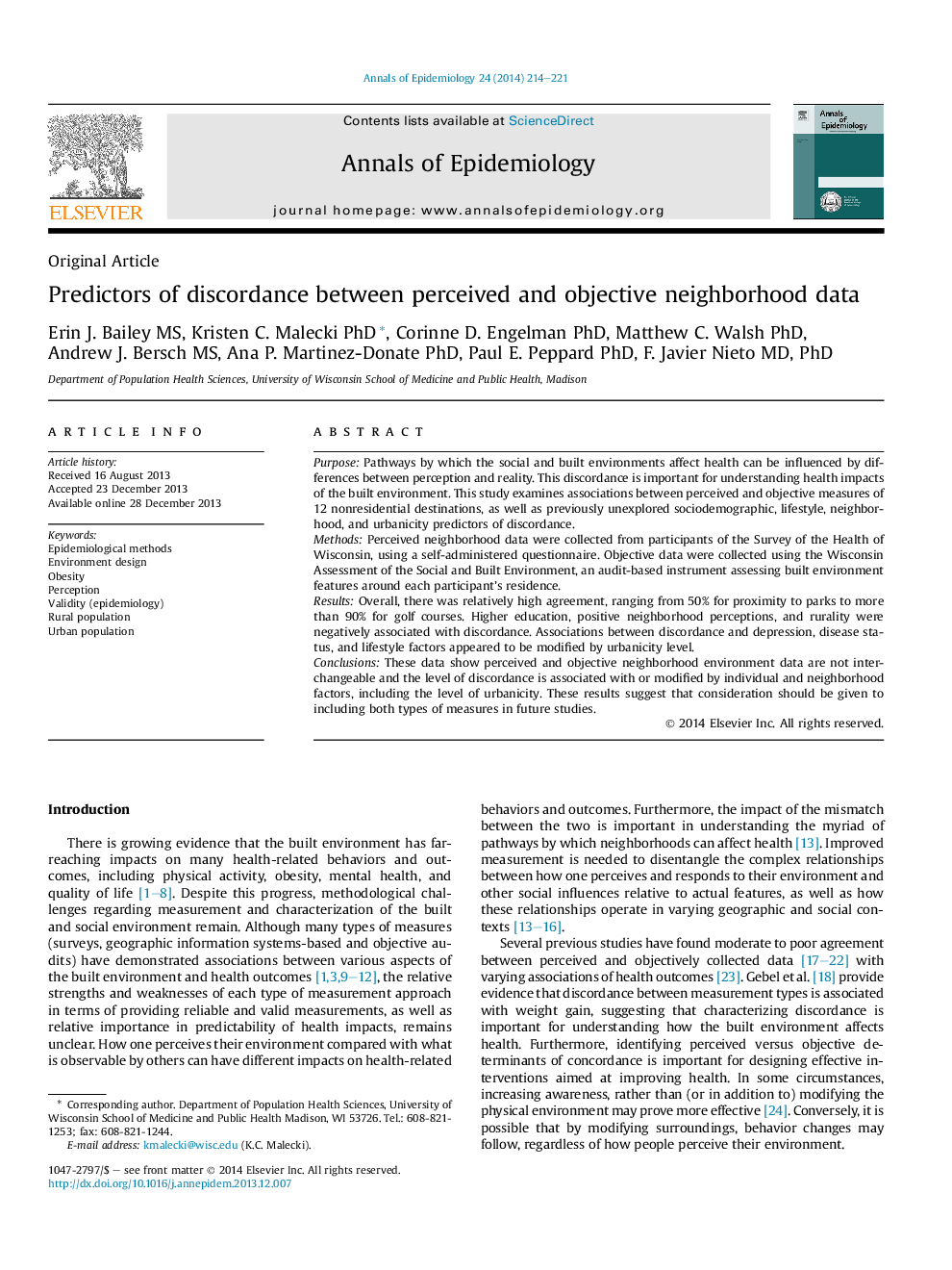| کد مقاله | کد نشریه | سال انتشار | مقاله انگلیسی | نسخه تمام متن |
|---|---|---|---|---|
| 3443915 | 1595257 | 2014 | 8 صفحه PDF | دانلود رایگان |
PurposePathways by which the social and built environments affect health can be influenced by differences between perception and reality. This discordance is important for understanding health impacts of the built environment. This study examines associations between perceived and objective measures of 12 nonresidential destinations, as well as previously unexplored sociodemographic, lifestyle, neighborhood, and urbanicity predictors of discordance.MethodsPerceived neighborhood data were collected from participants of the Survey of the Health of Wisconsin, using a self-administered questionnaire. Objective data were collected using the Wisconsin Assessment of the Social and Built Environment, an audit-based instrument assessing built environment features around each participant's residence.ResultsOverall, there was relatively high agreement, ranging from 50% for proximity to parks to more than 90% for golf courses. Higher education, positive neighborhood perceptions, and rurality were negatively associated with discordance. Associations between discordance and depression, disease status, and lifestyle factors appeared to be modified by urbanicity level.ConclusionsThese data show perceived and objective neighborhood environment data are not interchangeable and the level of discordance is associated with or modified by individual and neighborhood factors, including the level of urbanicity. These results suggest that consideration should be given to including both types of measures in future studies.
Journal: Annals of Epidemiology - Volume 24, Issue 3, March 2014, Pages 214–221
